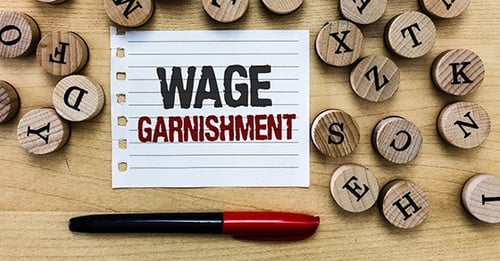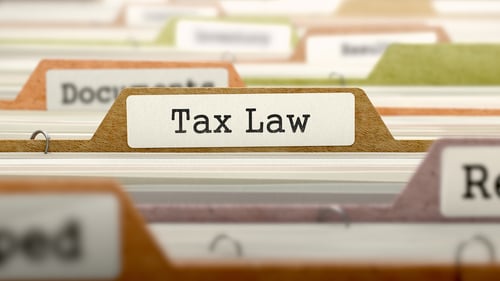Powell Tax Law Blog

IRS Wage Garnishment: How to Stop It and Protect Your Paycheck
For many, paychecks seem stretched thin, especially with rising inflation. Now, imagine losing part of that paycheck because the IRS has decided to garnish your wages due to unpaid tax debt. It’s a harsh reality for some, but there are ways to prevent or reduce the impact of garnishment, and understanding your options can make a big difference.
“If you have an ongoing tax debt and the IRS feels that you’re not paying fast enough, it has the option of garnishing your wages,” explains seasoned tax lawyer Steve Powell. “A wage garnishment is simply a legal seizure of your wages so that the government can satisfy the outstanding debt. Typically, IRS wage garnishment is very severe and sometimes only allows you to keep a small portion of your wages.”
IRS Levy Powers and How They Impact Your Wages, Bank Accounts, and Property
The IRS has the authority to seize a range of assets, including a portion of your paycheck, through a tax levy. This can involve deducting wages, withdrawing funds from bank accounts, or even selling assets like your car or real estate to settle unpaid tax debt.
“Taxpayers under threat of wage garnishment owe it to themselves to discuss their situation with a tax professional so that they understand all the options available to them,” said Powell. “Honestly, the best way to handle wage garnishment from the IRS is to avoid it in the first place by exploring all your avenues such as installment plans and offers in compromise.”
If you’ve received a notice titled "Final Notice of Intent to Levy and Notice of Your Right to A Hearing," time is of the essence. Consulting a tax professional immediately can help you navigate your options and potentially avoid garnishment.
Steps to Prevent IRS Wage Garnishment
If you’re facing tax debt but haven’t yet reached the garnishment stage, there are preventive measures that may help protect your paycheck:
- Installment Agreements: Setting up an installment plan can make your debt more manageable and may prevent the IRS from garnishing your wages.
- Offer in Compromise: If you qualify, an Offer in Compromise may allow you to settle your tax debt for less than the full amount owed.
- Consult a Tax Professional: Seeking help from a tax expert can open up options that may not be immediately obvious, potentially helping you avoid wage garnishment altogether.
The IRS Wage Garnishment Process
The IRS typically follows specific steps before garnishing wages. First, they’ll contact your employer, and you’ll be required to complete a garnishment form.
- Three-Day Window: You’ll have three days to report any exemptions you qualify for, which impacts how much money you keep for essential expenses.
- Exemptions Determine Paycheck Reduction: The exemptions you claim dictate how much of your paycheck is exempt from garnishment.
“If you don’t complete the form in time, the IRS will proceed in a manner that works best for them,” said Powell. “With every paycheck, a portion will go to you and the rest will go to the IRS.”
How Much Can the IRS Garnish From My Wages?
The IRS has significant authority to garnish wages for unpaid taxes, often taking a larger portion of income than regular creditors. In a recently updated article,TurboTax notes that unlike other creditors, the IRS is not restricted by federal or state garnishment caps, potentially leaving individuals with limited income for everyday expenses.
To help calculate exempt amounts, IRS Publication 1494: Tables for Figuring the Amount Exempt From Levy on Wages, Salary, and Other Income provides essential guidance. This publication includes tables and instructions for both employers and employees to determine how much income is protected from garnishment, based on factors such as filing status, pay frequency, and dependents.
Key Insights from Publication 1494:
- Protection for Basic Living Expenses: The exempt amount determined by these tables protects a portion of income to cover essential living expenses, ensuring individuals under garnishment orders are not left without resources.
- Annual Updates: The IRS updates Publication 1494 each year to reflect legal and economic changes, keeping exempt amounts fair and in line with living costs. Employers are responsible for using the most current version.
Examples of Potential Garnishment Amounts
The amount the IRS garnishes depends on your filing status, income, and number of dependents, with variation based on individual circumstances. According to the latest IRS Publication 1494 (2023), here are some sample garnishment scenarios:
- Single filer with no dependents, paid weekly:
- Exempt amount: $217.50 per week.
- If earning $1,000 weekly, the IRS could garnish $782.50, leaving $217.50.
- Head of household with two dependents, paid weekly:
- Exempt amount: $526.92 per week.
- If earning $1,000 weekly, the IRS could garnish $473.08, leaving $526.92.
- If earning $2,000 weekly, the garnishment could increase to $1,473.08, leaving $526.92.
These examples illustrate how much the IRS can seize for unpaid taxes, with garnishment amounts based on individual circumstances. Powell notes, “Unlike other creditors, the IRS doesn’t need a court judgment to garnish your wages.”
What to Know About IRS Wage Garnishment
The IRS Taxpayer Advocate Service explains that wage garnishment is not a one-time action—it has an ongoing impact. Until your debt is resolved or the levy is officially released, a portion of each paycheck will go to the IRS.
“A levy on your salary might take a portion of each paycheck until the IRS releases the levy – this is a continuous effect,” stated the IRS Taxpayer Advocate Service.
Property Subject to Continuous Levies:
- Salary and wages
- Deferred income, such as retirement or pension payments
By law, certain exemptions from levy apply depending on filing status, standard deductions, and dependents. To calculate exempt amounts, your employer will ask you to complete Form 668-W.
If this form isn’t submitted within three days, the IRS will compute exemptions as if you’re married and filing separately, with no dependents (or zero exemptions).
Through the Federal Payment Levy Program (FPLP), the IRS may also garnish specific federal payments continuously, such as Social Security benefits. In most cases, up to 15% of federal payments (like Social Security) can be taken.
Questions to Help Prevent or Resolve IRS Wage Garnishment
If you’re at risk of wage garnishment, it’s essential to act quickly and understand your rights. Powell advises taxpayers to ask questions like:
- Did the IRS send all required notices?
- Has the Statute of Limitations on the debt collection expired?
- Were my wages garnished during a period of bankruptcy?
- Is there a spousal defense?
“The right answers to the above questions could help you get the wage garnishment lifted by the IRS,” said Powell. “There are other circumstances and options available to taxpayers. The key thing to remember is that if you must have your wages garnished by the IRS, it does not have to cripple you financially.”
Need Help with IRS Wage Garnishment? Contact Powell Tax Law
IRS wage garnishment can be overwhelming and financially draining. Consulting experienced tax professionals like Powell Tax Law can be the first step toward relief. Don’t wait until the IRS garnishes your wages—contact Powell Tax Law to understand your options and take steps to protect your income.



.webp?width=500&name=thumbnail_large-1(2).webp)



